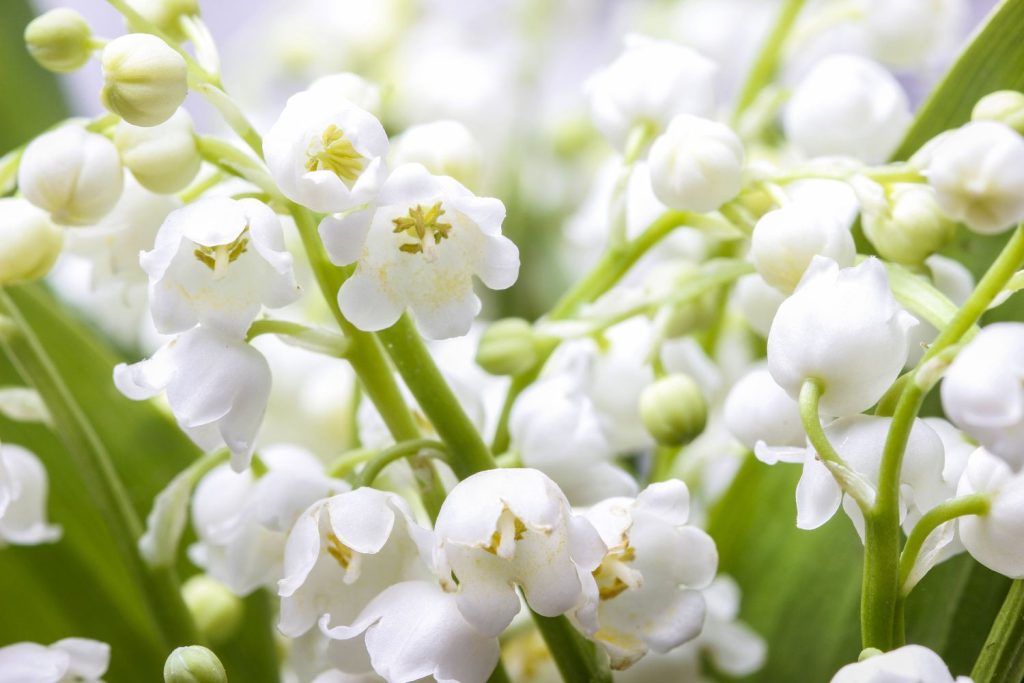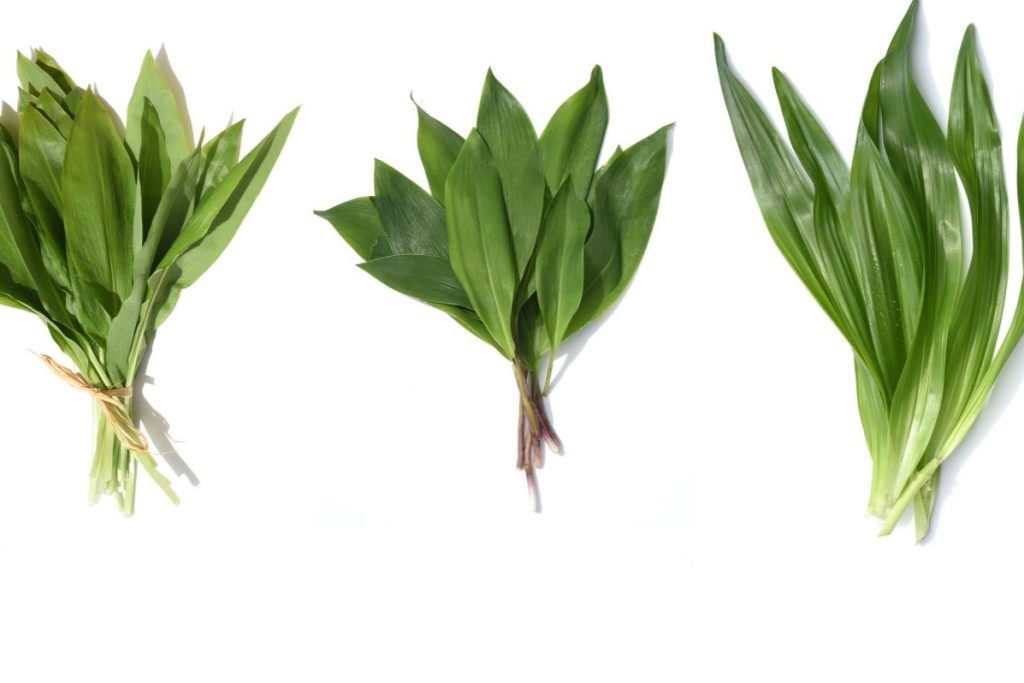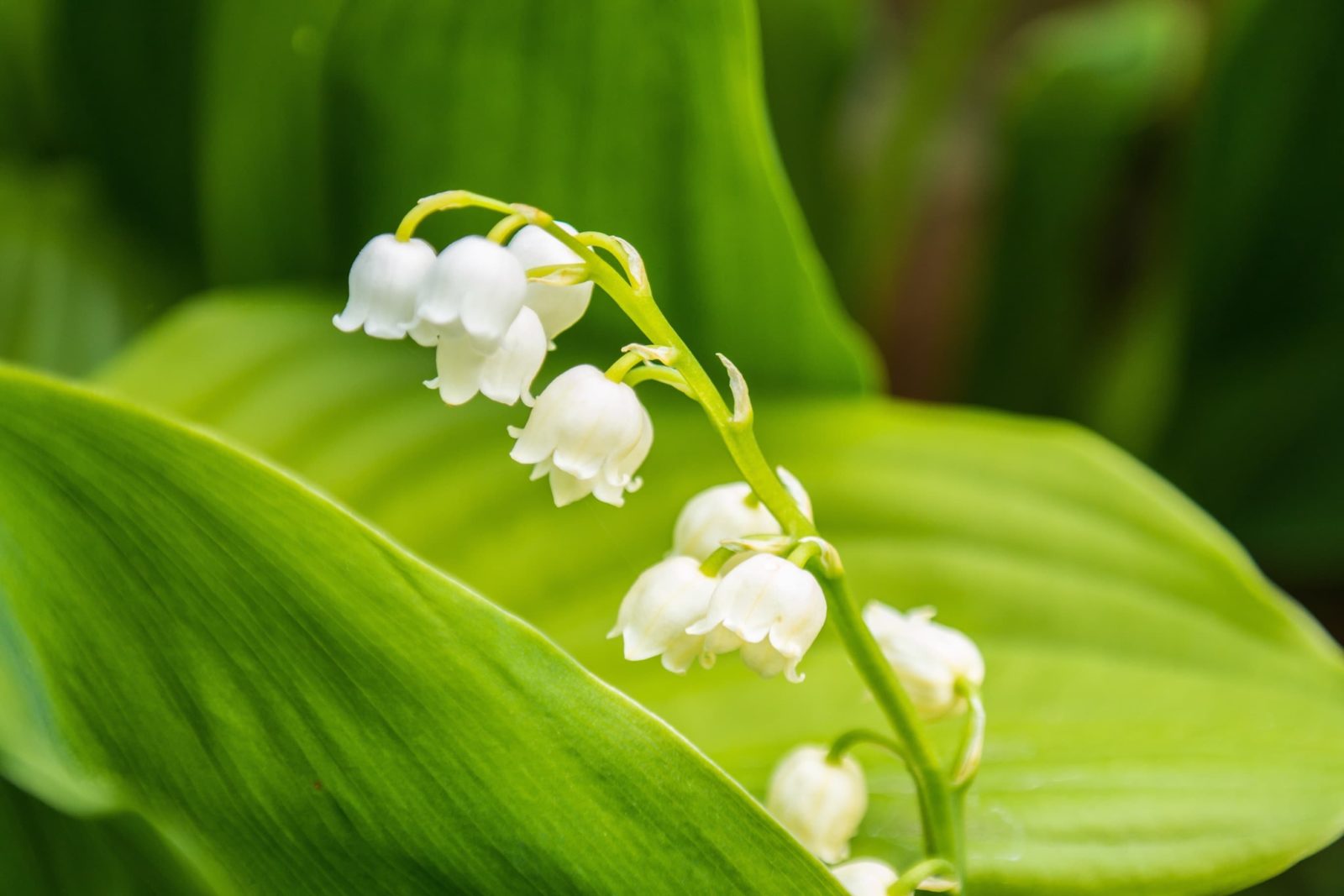While I study plant biotechnology, I often think about how bad it is for nature when people don’t know enough about it or spread false information. That is why I am so passionate about bringing people and nature closer together again. Favourite fruit: raspberries, strawberries and pineapple Favourite vegetables: courgettes, broccoli and cucumbers.
The fragrant lily of the valley symbolises sincerity, humility and purity. There are many pretty types of Convallaria majalis flowers that bloom in the spring and add a lot of beauty to gardens.
If, as you walk through the woods in the spring, you smell something strong, fresh, and flowery, look more closely at the undergrowth. With a bit of luck, you will notice small, white, bell-shaped flowers on long stems. These are likely lilies of the valley. Read on to learn all about lily of the valley, including its flowering time, varieties and more.
With its graceful, nodding white blossoms and sweet fragrance, the beloved lily of the valley holds a special place in many gardens However, Convallaria majalis is considered an exotic invasive in parts of North America The good news is many native woodland plants make excellent alternatives that capture the charm and appeal of lily of the valley without the environmental concerns.
If you’re seeking non-invasive substitutes here are 10 terrific native plants that resemble lily of the valley in growth habit, floral display or other traits
1. False Lily of the Valley (Maianthemum dilatatum)
Perhaps the closest native lookalike is Maianthemum dilatatum, also called false lily of the valley or two-leaved Solomon’s seal. This woodland perennial spreads by rhizomes to form lush carpets of foliage topped with dainty white blooms on slender arched stems in spring. The paired leaves resemble lily of the valley. Grows 1-2 feet tall. Zones 3-7.
2. Feather Solomon’s Seal (Maianthemum racemosum)
Another Solomon’s seal relative, Maianthemum racemosum produces plumes of tiny white flowers that dangling along the stems like lily of the valley blossoms The oval leaves are alternate rather than paired but the overall look is quite similar Grows 1-3 feet tall. Zones 3-8.
3. Starry False Lily of the Valley (Maianthemum stellatum)
Also called starflower false lily of the valley, this woodland perennial has delicate star-shaped white flowers that resemble Convallaria. The leaves are paired like true lily of the valley. Forms colonies in shady areas. Grows 1-2 feet tall. Zones 3-7.
4. Canada Wild Ginger (Asarum canadense)
Valued for its lush groundcover abilities, the heart-shaped leaves and low-growing habit of wild ginger resemble lily of the valley foliage. The unusual brownish-purple flowers hide at ground level rather than displaying openly. Grows 6-12 inches tall. Zones 3-8.
5. Appalachian Bells (Streptopus lanceolatus)
While the flowers differ, Appalachian bells makes a nice substitute for the arching flower stems and whorled leaves of Convallaria. White star-shaped flowers dangle under the leaves. Forms colonies in moist woods. Grows 1-3 feet tall. Zones 3-7.
6. Fringed Bromeliad (Tillandsia balbisiana)
For a houseplant alternative, this tropical air plant has long, grassy leaves that emerge from a central bulb like lily of the valley foliage. The tubular blue flowers are a bonus. Grows 6-12 inches tall. Zones 9-11.
7. Canada Mayflower (Maianthemum canadense)
Also known as Canadian lily of the valley, this diminutive forest perennial produces clusters of tiny white blooms on short upright stems with paired leaves below. The flower shape differs but the overall effect is quite similar. Grows 4-6 inches tall. Zones 3-8.
8. Pearlwort (Sagina subulata)
A moss-like evergreen groundcover, pearlwort forms low mats of lush foliage. The small white flowers held above on wiry stems add to the lily of the valley resemblance. Grows 1-4 inches tall. Zones 4-8.
9. Sweet Woodruff (Galium odoratum)
The whorled leaves and spread of sweet woodruff resemble Convallaria even before the small white flowers appear. The sweetly scented foliage is a bonus. Grows 6-12 inches tall. Zones 4-8.
10. Foamflower (Tiarella cordifolia)
Lastly, foamflower makes a good native groundcover alternative to lily of the valley, with its clusters of starry white blooms on short spikes above a spreading carpet of leafy foliage. Grows 6-12 inches tall. Zones 3-8.
Beyond these selections, many other woodland wildflowers share the delicate grace and floral beauty of Convallaria majalis. Just be sure to choose native species that won’t spread aggressively. With mindful alternatives, you can find the perfect lily of the valley lookalike plants to adorn your garden or containers.
Growing Tips for Lily of the Valley Lookalikes
Many plants that resemble lily of the valley also share a preference for the same growing conditions. Here are some useful care tips:
-
Most do best in partial to full shade in moist, well-draining soil. Avoid hot sun.
-
Water regularly to maintain evenly moist soil. Most are prone to drought stress.
-
Apply a balanced organic fertilizer once or twice per year in spring and fall. Avoid over-feeding.
-
Divide congested clumps every 2-3 years in early spring or fall.
-
Cut back faded flower stems to tidy appearance.
-
Mulch annually with compost or shredded leaves to retain soil moisture and nutrition.
-
Stake taller species if needed to prevent flopping of weak stems.
With proper care focused on their cultural preferences, you can grow lovely lily of the valley lookalikes successfully in your garden.
Where to Use Lily of the Valley Lookalike Plants
There are many ways to incorporate Convallaria majalis lookalikes into your landscaping:
-
Grow en masse as a flowering groundcover in shady beds or woodland settings.
-
Use in containers or hanging baskets for porches, patios or shady decks.
-
Plant below shrubs and trees to form an attractive flowering carpet.
-
Edge walkways, fences or foundations.
-
Naturalize in moist wild areas of the landscape.
-
Combine in shade gardens with ferns, hostas, coral bells and other woodland companions.
-
Use in rock gardens, trough gardens or hypertufa planters.
-
Border water features, rain gardens or drainage swales.
With their diversity of forms, sizes and growth habits, lily of the valley lookalikes offer versatility to suit many sites.
12 Ideas for Using Lily of the Valley Alternatives
Here are some specific ways to incorporate these Convallaria majalis lookalikes into your own gardens:
-
Plant wild ginger as a living mulch under shrubs and trees.
-
Use foamflower as edging along garden paths or walkways.
-
Grow false lily of the valley in drifts in a woodland setting.
-
Add Canada mayflower to a rock garden for delicate spring blooms.
-
Feature Appalachian bells among ferns in a shade garden.
-
Include pearlwort in a trough or hypertufa planter display.
-
Place potted fringed tillandsia on a covered patio or deck.
-
Border a rain garden with sweet woodruff for fragrance.
-
Combine starry false lily of the valley with hellebores and coral bells.
-
Use Solomon’s seal behind hostas or astilbes as a flowering backdrop.
-
Plant dwarf feather Solomon’s seal along a woodland path.
-
Group Canada wild ginger around boulders or tree trunks.
Once established, these tough and adaptable lily of the valley lookalikes need minimal care while brightening shaded areas with welcome color and charm.
6 Favorite Lily of the Valley Lookalike Plants
If you’re looking for a favorite Convallaria majalis native alternative for your own garden, here are six of the best:
-
False lily of the valley – Very close resemblance makes this a top pick. Spreads nicely.
-
Wild ginger – Subtly resembles foliage while acting as a living mulch.
-
Canada mayflower – A true native lily of the valley lookalike with sweet blooms.
-
Foamflower – Beautiful as a flowering groundcover or pathway edging.
-
Sweet woodruff – Fragrant foliage and starry flowers. Great for edges and containers.
-
Solomon’s seal – Graceful arching stems and bell-like blooms. Clump forming.
For most garden settings, one or more of these six versatilenatives can perfectly recreate the elegant charm of beloved lily of the valley.
3 Tips for Growing Lily of the Valley Lookalikes
To grow beautiful Convallaria majalis alternatives, focus on:
-
Site selection – Most require part to full shade with rich, moist organic soil.
-
Watering – Water 1-2 inches per week, allowing soil to dry slightly between waterings.
-
Fertilization – Apply a balanced organic fertilizer once in early spring and again in fall if needed.
Meeting these key growing requirements will allow your lily of the valley lookalike plants to thrive and spread nicely.
How to Use Lily of the Valley Substitutes in the Landscape
Here are sometips for incorporating these enchanting lily of the valley alternatives artistically within your landscape:
-
Use as a groundcover layer in wooded or shady areas where little else may grow. Allow them to naturalize and spread to form flower carpets.
-
Plant around the edges of garden beds and pathways as an ornamental flowering border. Keep trimmed to prevent unwanted spread.
-
Include in container designs on shaded patios or decks for elegant seasonal color. Mix varieties for added interest.
-
Feature in sheltered garden beds and foundation plantings to disguise fading bulb foliage. Combine with ferns or annuals.
-
Tuck into pockets within rock gardens or areas around boulders and stones to soften and decorate.
-
Surround rain gardens, drainage swales or low pond edges subject to occasional standing water.
With thoughtful placement, the right lily of the valley lookalikes can infuse shady spots with delicate beauty while avoiding invasive growth.
Companion Plants for Lily of the Valley Alternatives
Here are some ideal plant companions for Convallaria majalis lookalikes:
- Ferns like ostrich, Christmas, maidenhair
- Coral bells, foamflowers, astilbes
- Hostas, ligularias, lenten roses
- Wild gingers, trilliums, blue-eyed mary
- Columbines, hellebores, epimediums
- Bleeding hearts, wood poppies, impatiens
- Wild strawberries, moss phlox, violets
Choose easy-care perennials that enjoy the same growing conditions when combining with lily of the valley alternatives. They will make perfect partners to create stunning woodland displays.
Problems and Solutions for Growing Lily of the Valley Lookalikes
While relatively trouble-free, here are some potential problems and solutions for lily of the valley substitutes:
Problem: Plants decline, leaves yellow, growth stunted
Solution: Improve drainage; amend soil to raise pH
Problem: Few flowers
Solution: Increase light exposure; remove any competing tree roots
Problem: Leaves scorched, sunburned
Solution: Relocate to a shadier spot, increase watering
Problem: Plants spread aggressively
Solution: Remove via digging; use physical barriers to contain spread
Pay attention to any signs of stress and adjust care accordingly to maintain health. But in general, these are durable, fuss-free alternatives well worth including in your garden.
With their graceful beauty and reliable performance, native lily of the valley lookalike plants offer guilt-free alternatives for shady plantings. Find your favorites and soon you’ll enjoy elegant, flowering carpets free of invasive worries.
Frequently Asked Questions About Lily of the Valley Alternatives
Here are answers to some commonly asked questions:
What’s a good groundcover that looks like lily of the valley?
False lily of the valley (Maianthemum dilatatum) is one of the very closest native alternatives in appearance and growth habit. Foamflower and Canada mayflower also make good groundcover substitutes.
Is there a perennial that looks like lily of the valley?
Yes, there are several good perennial alternatives including false lily of the valley, Solomon’s seal, sweet woodruff, foamflower, Canada mayflower and wild gingers. These all spread by rhizomes or stolons.
What is a good alternative to lily of the valley for shade?
Some top shade-loving alternatives include false lily of the valley, foamflower, sweet woodruff, wild gingers, and Appalachian bells. All thrive in shaded garden settings.
What native plant looks like lily of the valley?
Great native lookalikes include false lily of the valley, Canada mayflower, feather Solomon’s seal, and starry false lily of the valley, as well as foamflower and wild gingers.
Is lily of the valley invasive?
The common lily of the valley (Convallaria majalis) is considered invasive in some areas of North America, spreading aggressively by underground rhizomes. Native alternatives are a safer choice.
What can I plant with lily of the valley lookalikes?
Great companions include ferns, hostas, astilbes, hellebores, heucheras, wild strawberries, violets, bleeding hearts, and other shade lovers that thrive in organic, moist soil.
By incorporating the suggestions and advice in this article, you’ll be able to successfully grow stunning lily of the valley alternatives in your own garden. Soon you’ll enjoy gorgeous, non-invasive flowering carpets brightening those shady areas.
When do lilies of the valley bloom?
Lilies of the valley flower from March to June. During this time, the plants and their white flower clusters exude an intensely sweet scent. A bouquet of these flowers makes a lovely Mother’s Day gift. But keep in mind that lilies of the valley are now protected and can’t be picked from the wild in some places, like Austria.

Lily of the valley look-alikes
Although aromatic, these herbaceous perennials are toxic and, unfortunately, easily confused with edible look-alikes. The leaves of lily of the valley look a lot like the leaves of the poisonous autumn crocus (Colchicum autumnale) and the edible wild garlic (Allium ursinum). It’s also possible to get these plants mixed up because they all grow in the shady, herb-filled undergrowth of deciduous and mixed forests. One way to differentiate between the three is by taking a closer look at the leaves. The undersides of lily of the valley leaves are shiny, while those of wild garlic are not. Autumn crocus leaves are shiny on both sides and altogether narrower. Read our article on identifying wild garlic to learn more about how to tell the difference between wild garlic that is safe to eat and garlic that is poisonous.
Solomon’s seals with a scent (Polygonatum odoratum) could be mistaken for lily of the valley flowers when it comes to the flowers. Solomon’s seal leaves, on the other hand, grow in pairs and along the whole shoot, while lily of the valley leaves grow in pairs but only at the stem’s base.

Lily of the Valley – how to grow/convallaria majalis/toxic/invasive plant
- The Ultimate Guide to Growing Strawberries in Raised Beds - August 8, 2025
- No-Dig Garden Beds: The Easiest Way to Grow a Beautiful Garden - August 6, 2025
- How to Protect and Preserve Wood for Raised Garden Beds - August 6, 2025

